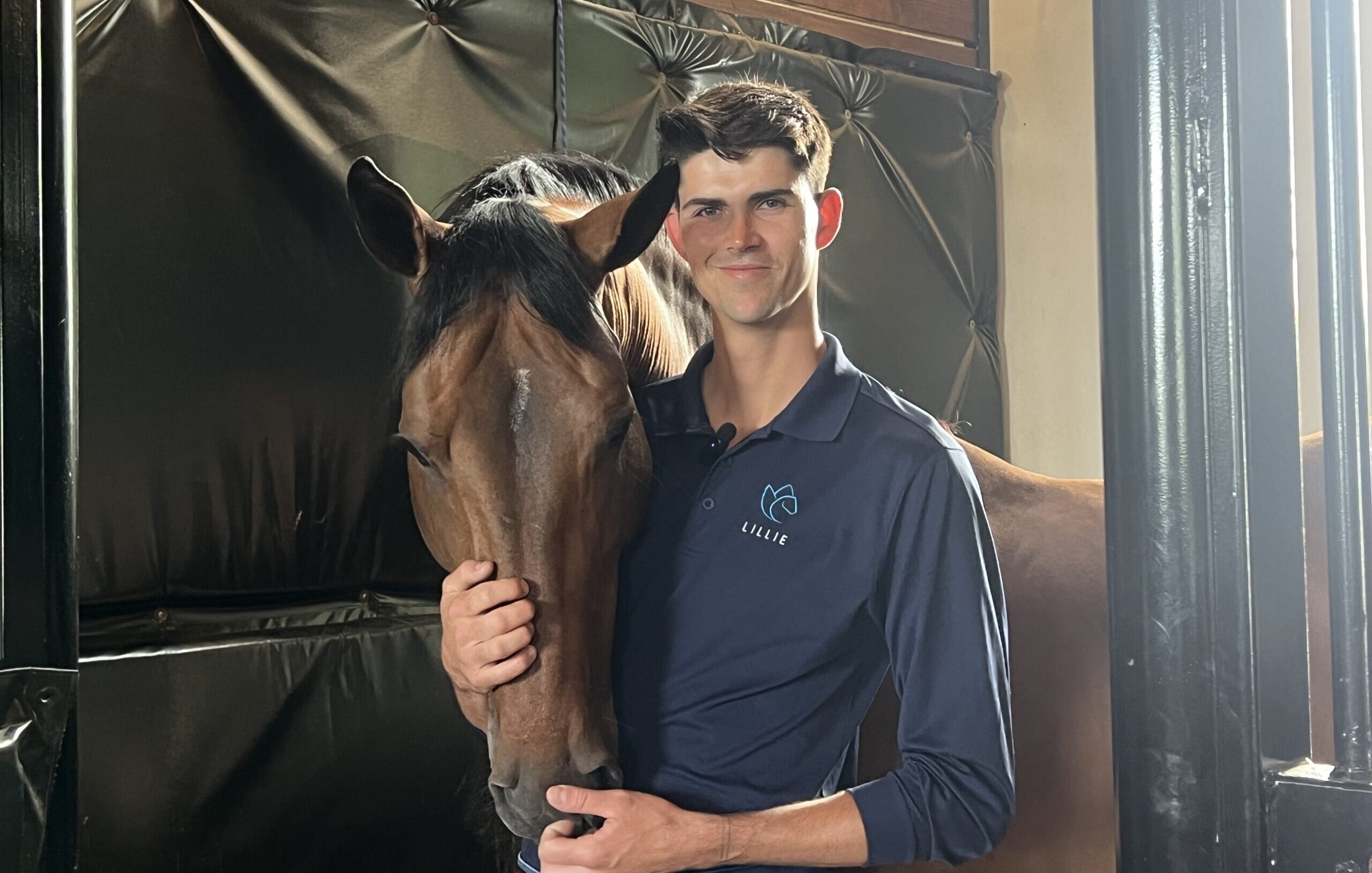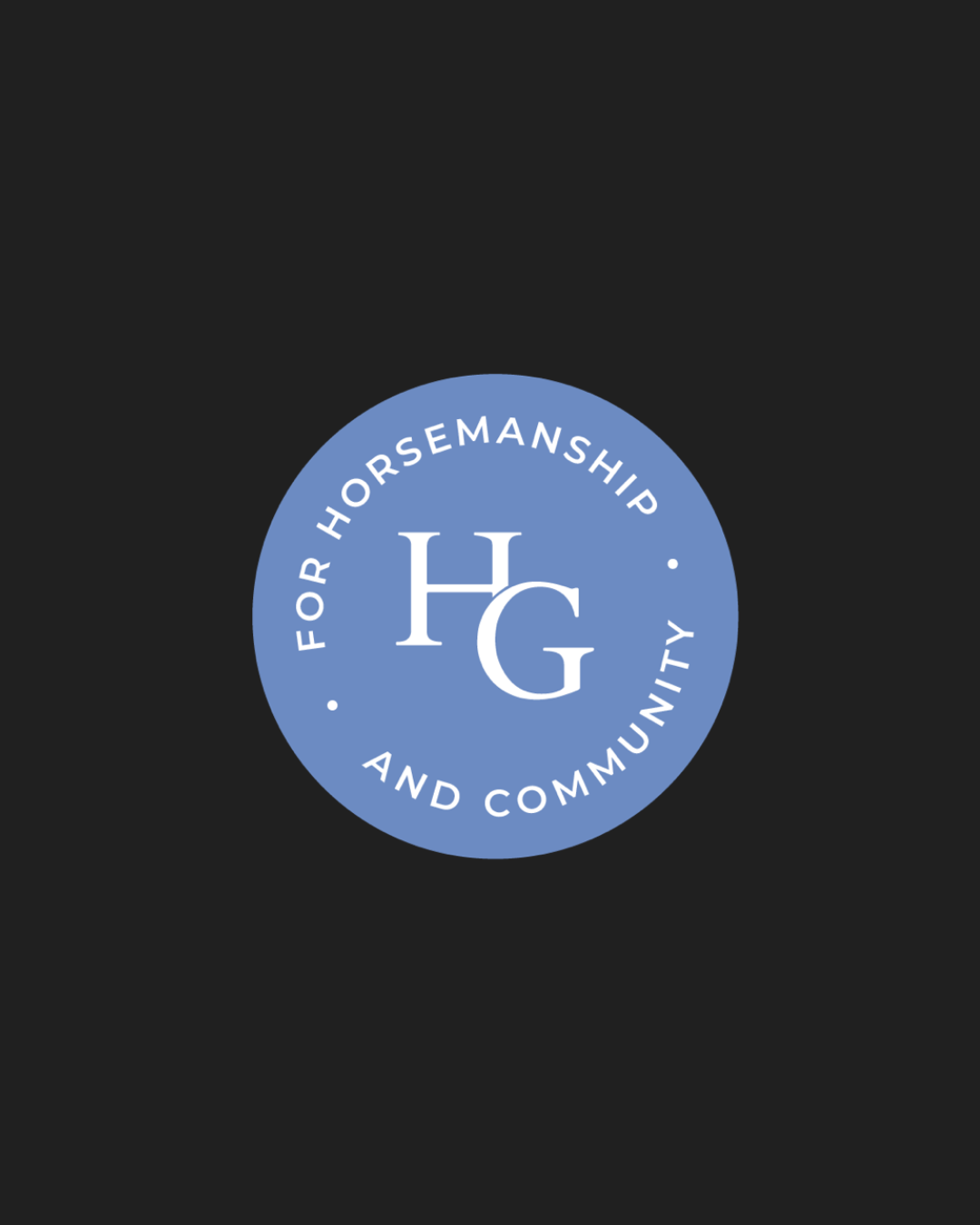What is your care routine before showing?
Before the horses go to the show, they always get a good bubble wash. We clean the body with soap; Head and Shoulders for mane and tail; then we put conditioner and detangler on the tail only, so we don’t have to use ShowSheen during the week.
As soon as they are in FEI stabling, they usually get the Activo-Med magnetic blanket in the morning before they go flat or before they have to show. As well as the Activo-Med blanket, we use the Activo-Med boots on the front legs to activate the blood flow so they are ready to jump.
This is also a good time for them to stand on the magnetic hoof pad; same idea as the Activo-Med magnetic boots in that we’re trying to bring blood flow to the hoof so they are ready for the effort coming up.
Except for the warm-up on the first day, they all get braided. I do believe that horses know that when you braid them, it’s time for them to concentrate, and they understand what is coming so they can put their minds into the show mood. At least we try to teach them this so they get that it’s the job.
How do you take care of the legs at a horse show?
After the horse show, I would say it depends on what horse and what class they are jumping.
For small classes, they can be wrapped with Arnica only on the front legs. If they start to jump a bit bigger, like 1.40-1.45m–and also if they do more than one day–then we usually poultice the front legs and the back legs, again according to the horse’s age and type.
For the main horses, after a big class, we use what we call the “pink poultice” by Numotizine. It’s a stronger type of poultice that drains all the bad things out of the legs and keeps them tight. We use a cotton sheet on top to create a “sweat” reaction as well to make it work even better.
Whenever they jump, they always get their front legs iced. If they tolerate them on their hind legs, we do them as well again according to the height of the class.
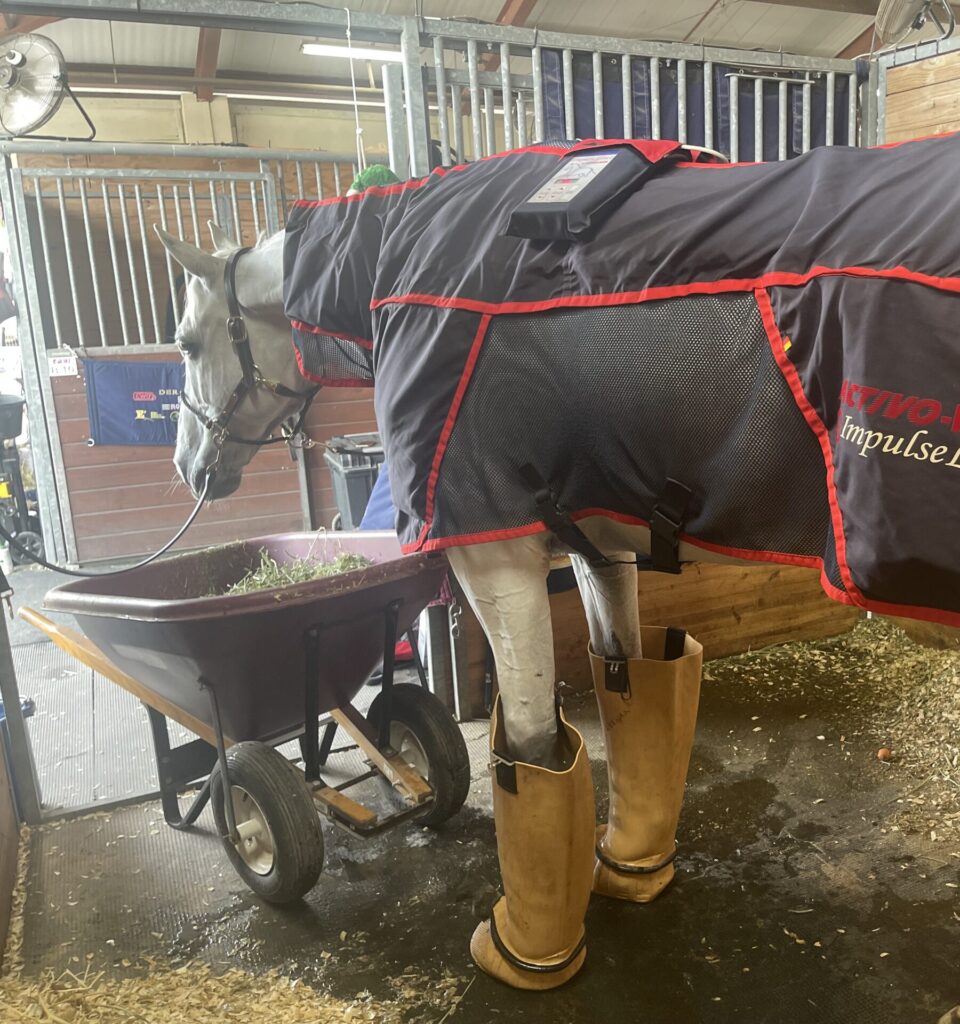

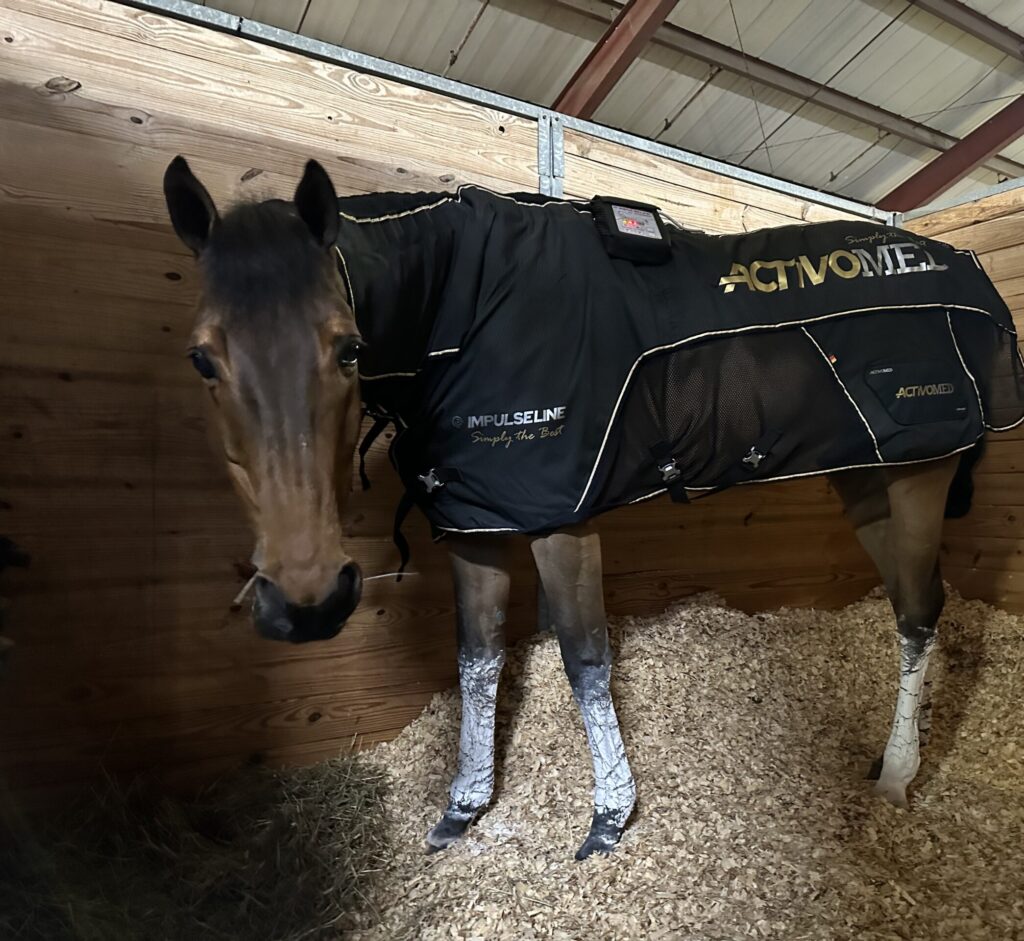
For the main horses, we have spa boots, so the horses stand in them for 20-25 minutes. We put in water and a lot of ice to try to replicate the action of a cold water spa.
In Florida, we are lucky we have a spa at home, so it’s easy to use after they jump at home as well as after the Saturday night Grand Prix and the Sunday 1.50m when we bring them back home. During a show week in FEI, we use the medicated liquid hoof pack from Sole Pack, and when they need a bit extra help on hard footing or after they jump, we add the solid hoof packing from Sole Pack as well. After a big class, I sometimes use the green Epsom salt hoof packing with Animalintex and wrap the feet with vet wrap.
Every horse is different in terms of wrapping, so it really depends on their needs. But in FEI, they are usually wrapped all around to avoid any swelling and also to protect the legs as they are not home. We have a lot of stallions, so if they decide to play with the neighbors during the night, we limit the chance of cuts on the legs that way.
What is your feeding routine?
For feeding we use Cavalor grain as it is easy to find and pretty similar grain wherever you go in the world–which is good so that you don’t change the horses’ routine much. It is also easy to use as they have grain for horses that need energy, and grain for horses that have a lot of blood and need to relax.
They eat three times a day small amounts of grain and four times a day hay–7 a.m., 11:30 a.m., 4 p.m. and 8:30 p.m. Basically, we try to have them eating pretty much all the time to prevent the stomach from creating acid by being empty.
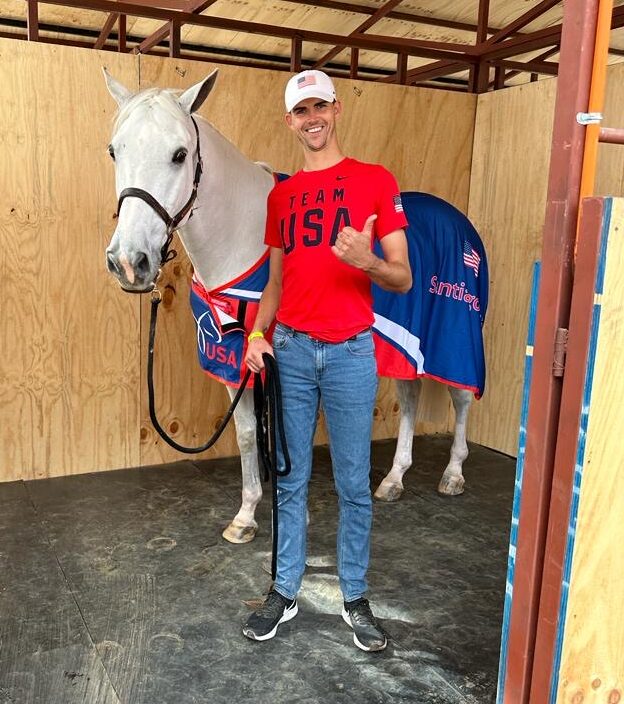
The feeding routine for me must be the same at the horse show and at home. You can ask everyone who worked with me before or now: the one word that comes across often is “routine.” Horses like routine, so by having them move around all the time to different places, you need to provide them comfort and try to replicate the routine as much as possible. The only thing that changes is if they jump a class after dinner time; then they will get an extra meal with a bit of grain as the muscle will need to use some nutrients to recover from the effort.
Do you wash your horses, or just their legs, a lot? With or without shampoo?
We wash the horses usually on Tuesday with shampoo, and the rest of the week we try to avoid washing them as much as possible. However, in Florida, it’s not always easy. So if they are sweating, then we hose them off with water and then we put some white vinegar in a bucket of water and rinse them with this. It’s very good for the skin and helps the skin from getting decolorization by the sun.
If they are not super sweating and a bit sticky, we use Vetrolin Liniment to cool them off. We can also use it as well as the vinegar in a water bucket after a shower; it will make the horses cool down much easier.
After they get washed, we always use a sweat scraper to get the water off their body as much as possible. And we towel-dry them and hand-walk them until they are dry. We try to avoid putting them under the fan as I believe it will make hair grow faster, and we don’t want to clip them too often so they look good. Then we spray some Absorbine Santa Fe to condition the coat. The good thing with Santa Fe is that it has some sunscreen in it so it protects the coat from bleaching by the sun.
Then always a good grooming with a curry and brushes to get the rest of the dirt off and put the coat flat.
For the legs, especially in Florida, we do not wash them every day; only if they go out of the barn on the bridle path or when they show, as the sand can be very dirty. We make sure to clean them well with baby shampoo or the EquiFit AgSilver which helps to prevent any scratches.
What is your grooming routine? Do you do a lot of currying?
Brushing is the most important part. If you are not sweating when you brush, then you are not doing it well enough. We have a strong routine on brushing the horses. I do believe that if you brush the horses well enough every day, you end up having to clip less often, which is better for the horses–and, let’s be fair, for the grooms as well. I do a good curry first, then the soft brush to make the coat flat again, and once more a good brush and then they should be shiny.
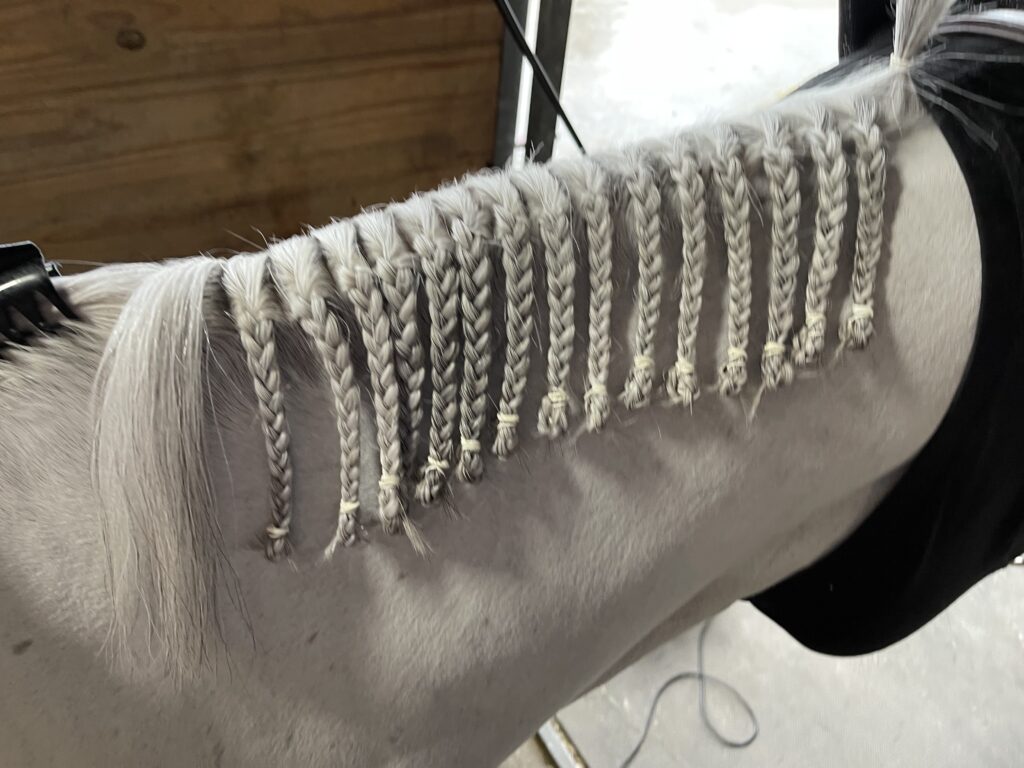
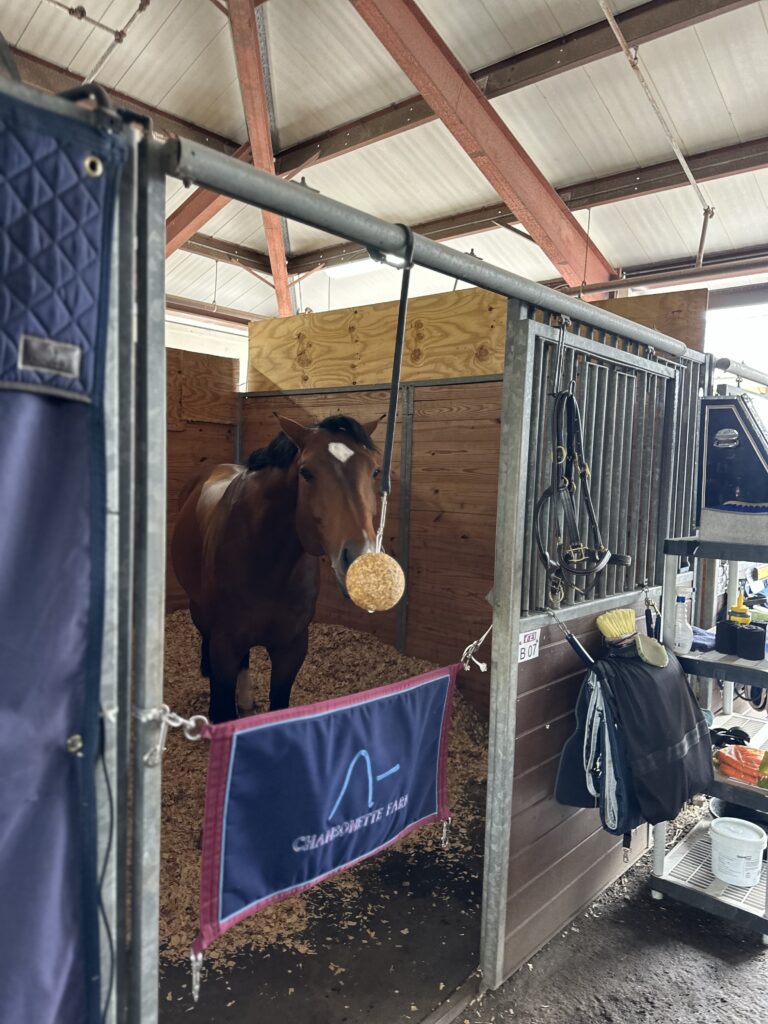
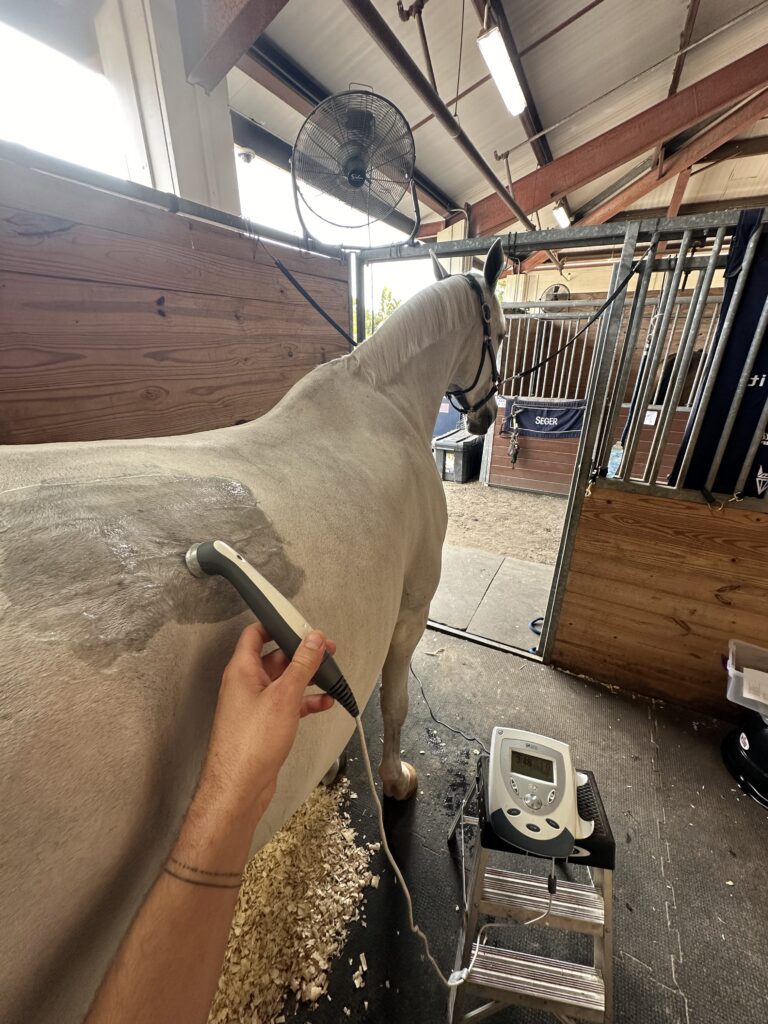
For the feet, we use Keratex on the bottom of their feet to strengthen the hoof, as Florida has a pretty humid climate. We sometimes use Corona cream for the coronary band to help the hoof grow well and avoid any type of line on the hoof walls. If the hoofs are dry, we use some conditioning oil on top and under the hoof.
Which grooming products do you like to use and why?
I mentioned a couple above.
Santa Fe: It helps to make the coat shiny and keeps the dust off. I love to use it, especially in Florida. It protects the skin from the sun with the sunscreen inside of it.
Sole Pack medicated liquid: This product is great and easy to use if you have humid feet or any soreness in the feet.
KILI product from Wellington Care is a great product to have around again because of the humidity in Florida. One spray in a dirty fog, and the next day it comes back clean and dry just the way you want it.
Witch Hazel is a go-to. You can put it on your wrap if you have dry legs or if you feel scratches are coming. You can also use it if you have any type of rash; it will help the skin to calm down.
The “pink poultice” (Numotizine) is great for taking care of the legs after a big effort and really help to keep the legs tight and avoid any swelling.
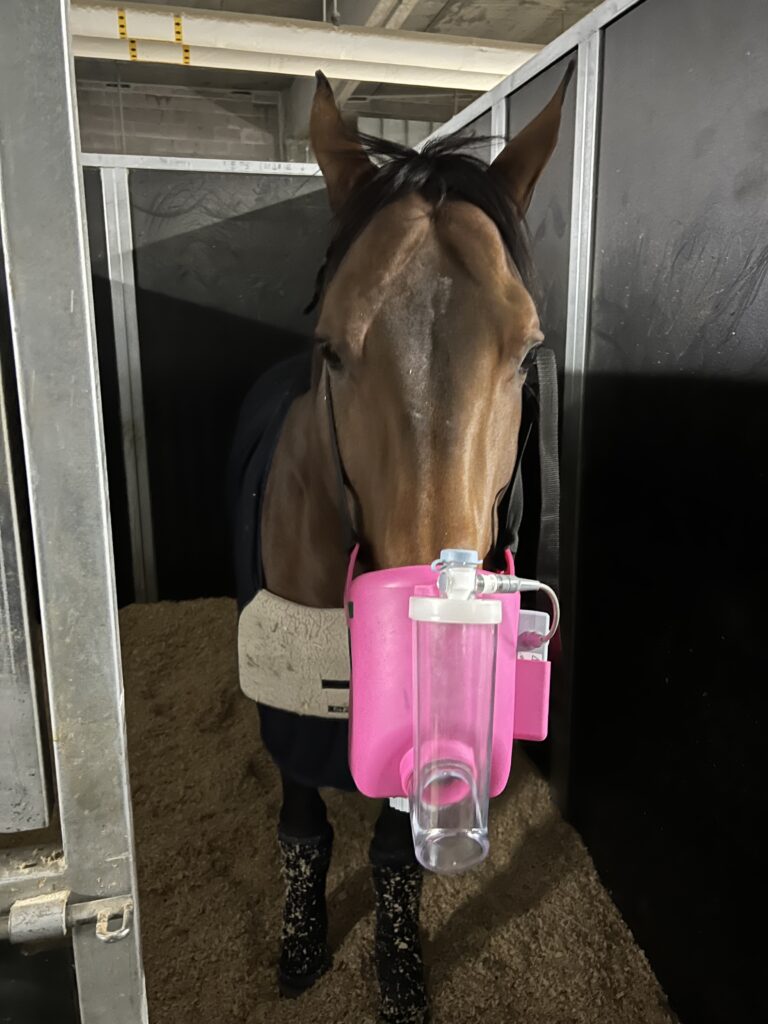
Neosporin Original is my favorite cream to use if they have a cut. With the antibiotics inside, it will help healing and avoid any infection.
Anything else you think that’s interesting for other people to know?
We like to use the nebulizer with Immuno San on the horses. Again, we use it especially in Florida with the climate but also in competition when the horses are inside and it’s very dusty. It helps to prevent any breathing problems and helps the lungs to expand, as they will have to work much more in the ring.
HorseGrooms is a platform of resources, education, and support for grooms by grooms. This is an online community, hub of resources, and spotlight of industry highlights born out of love for the horse and love for the sport. But our mission goes beyond simply providing resources and creating content.
Our goal is to create a space to keep horsemanship alive; for grooms to support and educate each other; and to help advance the craft of grooming. HorseGrooms is dedicated to ambitious grooms everywhere.
